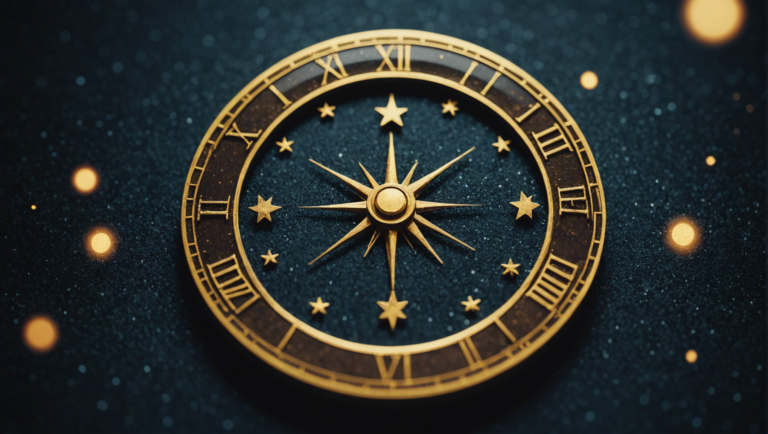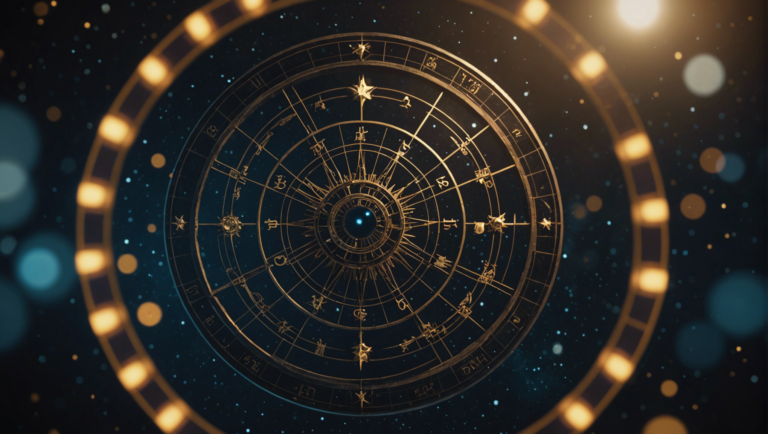Is Sidereal Astrology More Accurate
Exploring Sidereal Astrology: Is It More Accurate?
Unveiling the Precision of Sidereal Astrology
The quest for understanding the cosmos and how its vast energies impact the terrestrial life has been an enduring human endeavor. Among the myriad methodologies employed to decipher celestial influence, astrology stands out, particularly for its division into two main types: tropical and sidereal. However, the question of which system offers more accuracy is a topic of considerable debate, especially when it comes to sidereal astrology. This article ventures into the intricate realms of sidereal astrology to explore its precision and relevance in our lives.
The Foundation of Sidereal Astrology
Sidereal astrology is rooted in the observation of the stars. Unlike its tropical counterpart, which is aligned with the seasons, sidereal astrology is based on the actual positions of the zodiac constellations in the sky. This approach considers the Earth’s gradual axial precession, meaning the sidereal zodiac adjusts for the gradual shift in the Earth’s orientation in space over millennia. This precise astronomical alignment serves as the cornerstone of sidereal astrology, offering a celestial snapshot that many argue is more closely tied to reality as we observe it.
A Glimpse into Astronomical Accuracy
One of the pillars of the argument for sidereal astrology’s accuracy is its reliance on the fixed stars and constellations. The stars have served as humanity’s celestial guideposts for millennia, marking time and seasons with a consistency unparalleled in the natural world. By aligning astrological interpretations with these fixed celestial landmarks, sidereal astrology provides a framework deeply embedded in the cosmos’s actual mechanisms. This adherence to astronomical reality is a potent argument in its favor, suggesting a form of astrological interpretation that may resonate more deeply with the fundamental rhythms of the universe.
The Cultural and Historical Context
Sidereal astrology is not a singular, monolithic system but rather encompasses a diverse array of traditions, each with its unique methodologies and interpretations. Historically, cultures across the Middle East, India, and other parts of Asia have developed rich astrological traditions based on sidereal calculations. The famed Vedic astrology of India, in particular, offers insights into the human experience that have been refined over thousands of years, emphasizing the interconnectedness of all life within the cosmic order. This depth of cultural and historical context enriches sidereal astrology, providing layers of meaning and insight that are the product of centuries of observation, interpretation, and practice.
Personal Resonance and Psychological Depth
Many adherents to sidereal astrology report a profound personal resonance with its readings and predictions. This sense of alignment, they argue, is due to the system’s astronomical precision and its deep roots in human history and culture. Moreover, sidereal astrology often delves into the psychological dimensions of the human experience, offering insights that transcend the merely predictive. This focus on the psychological and spiritual aspects of life, framed within a cosmically coherent system, renders sidereal astrology a powerful tool for self-understanding and growth.
Navigating the Debate on Accuracy
While the precision of sidereal astrology is compelling, it is crucial to acknowledge the ongoing debate within the astrological community. Astrology, by its nature, is a subjective field, blending science, art, and intuition. The question of which system—sidereal or tropical—is more accurate may ultimately come down to personal preference and the specific contexts in which astrology is applied. What remains undisputed, however, is the profound impact that engaging with the cosmos, through any astrological lens, can have on an individual’s perspective on life and their place within the universe.
Fostering a Broader Understanding
Exploring sidereal astrology enriches our understanding of the ancient practice of astrology as a whole. Whether one leans towards sidereal or tropical, or even another system entirely, the key is to approach astrology with an open mind and a willingness to explore the depths of the human experience in relation to the cosmos. Sidereal astrology, with its emphasis on astronomical accuracy and rich historical context, offers a unique and compelling perspective that merits attention and respect within the broader astrological discourse.
The Foundations of Sidereal Versus Tropical Astrology
Astrology, an ancient practice that seeks to understand and predict human events and personality traits through the positions of celestial bodies, has evolved into various branches, with sidereal and tropical astrology being two of its primary forms. These branches, while sharing a common root, diverge significantly in their methodologies and interpretations of celestial events, leading to a fascinating exploration of cosmic influence on human affairs.
Sidereal Astrology: Aligning with the Stars
Sidereal astrology, which calculates planetary positions against the fixed stars or the actual constellations, offers a perspective rooted deeply in the observable universe. This approach is characterized by its use of the sidereal zodiac, a zodiac that aligns more closely with the current positions of the constellations. Proponents argue that this approach maintains a direct connection with the celestial phenomena that our ancestors observed and is thus more accurate in reflecting the heavens’ influence on earthly life.
The precision of sidereal astrology lies in its attention to the precession of the equinoxes, a phenomenon causing the Earth’s axis to shift over time. By accounting for this, sidereal astrology aligns its measurements with the stars’ current positions, offering a dynamic and evolving insight into the cosmos’s influence on individual destinies and world events.
Tropical Astrology: A Seasonal Perspective
Contrastingly, tropical astrology bases its calculations on the Earth’s orientation to the Sun, focusing on the seasonal changes rather than the stars’ actual positions. It uses the tropical zodiac, which divides the year into twelve equal parts starting from the vernal equinox, marking the beginning of spring in the Northern Hemisphere. This system emphasizes the Sun’s path through the sky and its influence on earthly cycles and human experiences.
Tropical astrology’s strength lies in its symbolic representation of human psychological development, with each zodiac sign corresponding to a specific phase in the seasonal cycle. This approach offers insights into personal growth and transformation, reflecting the interplay between light and darkness, warmth and cold, life and decay, in the human psyche.
A Comparative Analysis
When examining the efficacy and accuracy of sidereal versus tropical astrology, one must consider the philosophical and practical foundations of each. Sidereal astrology, with its fixed star-based calculations, offers a direct connection to the celestial movements observed by ancient astrologers. It provides a cosmic perspective that many argue is more aligned with fate and destiny’s immutable aspects.
On the other hand, tropical astrology presents a more psychological and archetypal understanding of human life, aligned with the Earth’s seasons and their symbolic meanings. It speaks to the internal processes of growth, decay, and rebirth, offering a mirror to the soul’s journey through time.
The Choice Between Sidereal and Tropical
Deciding whether sidereal or tropical astrology is more accurate depends largely on one’s perspective on what astrology’s purpose is. If the aim is to maintain a direct lineage with ancient astronomical observations and anchor interpretations in the fixed stars’ positions, sidereal astrology may hold greater appeal. It provides a consistent and precise celestial map that resonates with the desire for a tangible connection to the cosmos.
Conversely, if astrology is seen as a symbolic language that articulates psychological and spiritual growth cycles, tropical astrology’s seasonal approach might be more relevant. It aligns with the internal rhythms of the human experience, offering insights that reflect the soul’s evolution through life’s perpetual cycles.
Engaging with the Cosmic Dialogue
Ultimately, both sidereal and tropical astrology offer profound insights into the human condition, reflecting different facets of our relationship with the cosmos. Whether one leans towards the fixed stars’ consistency or the symbolic resonance of the seasons, engaging with either system can provide valuable perspectives on life’s mysteries. The choice between sidereal and tropical astrology is not about which is more accurate in a universal sense but which resonates more deeply with the individual seeker’s view of the world and their place within it.
Decoding the Zodiac: How Sidereal Astrology Alters Your Sign
The debate between tropical and sidereal astrology is one rooted in centuries of astronomical observation and astrological interpretation. While many in the Western world are familiar with the tropical zodiac, which aligns with the seasons, the sidereal zodiac, with its foundation in the actual positions of the constellations, offers a different lens through which to view our personalities and fate. This exploration into how sidereal astrology alters your sign delves into the intricacies of cosmic measurement and its impact on astrological identity.
Understanding Sidereal Astrology
Sidereal astrology calculates planetary positions against the backdrop of the constellations as they are currently located in the sky, unlike tropical astrology, which is based on the position of the sun relative to the earth at the vernal equinox. This crucial difference arises from the precession of the equinoxes, a phenomenon where Earth’s rotational and orbital parameters change over time, causing a gradual shift in the orientation of the Earth’s axis.
This shift means that the astrological sign you identify with in the tropical zodiac may not be your sign in the sidereal system. The precision of sidereal astrology, with its adherence to present celestial arrangements, offers a compelling argument for its accuracy in reflecting an individual’s character traits and life path.
The Impact on Your Zodiac Sign
The zodiac in sidereal astrology is aligned with the constellations as they physically exist in the sky today. This alignment can result in a ‘shift’ backward by approximately one zodiac sign compared to the tropical zodiac. For example, if you are a Gemini in the tropical zodiac, you might find yourself classified as a Taurus in the sidereal zodiac. This shift results from the sidereal system accounting for the precession of the equinoxes, offering a more astronomically accurate representation of where planets are located in the sky at the time of your birth.
Accuracy and Personal Identity
Many who explore sidereal astrology find that it provides insights that resonate more deeply with their personal experiences and character traits. This increased accuracy can be attributed to the sidereal zodiac’s alignment with the current positions of the constellations. By considering the precession of the equinoxes, sidereal astrology acknowledges the dynamic nature of the cosmos and its influence on terrestrial life.
The question of whether sidereal astrology is more accurate than its tropical counterpart depends on one’s perspective on what astrology aims to achieve. If the goal is to reflect the actual stellar backdrop against which we measure the planets’ movements, then sidereal astrology holds a claim to greater accuracy in its calculations and interpretations.
Embracing a New Astrological Identity
Adapting to your sidereal zodiac sign can be an enlightening process, offering a fresh perspective on your personality, strengths, challenges, and life path. This transition encourages a deeper dive into the underpinnings of astrological lore, pushing the boundaries of self-understanding and cosmic connection.
Viewing your astrological identity through the lens of sidereal astrology does not negate the insights gained from the tropical zodiac; rather, it enriches your astrological journey by adding another layer of celestial wisdom. Embracing both systems allows for a fuller appreciation of the ancient art and science of astrology, providing a more nuanced and comprehensive understanding of the celestial influences that guide and shape our lives.
The exploration of sidereal astrology reveals a fascinating alternative to the traditional tropical system, offering a different perspective on our connection to the cosmos. Whether sidereal astrology is deemed more accurate depends on individual perspectives on the purpose and practice of astrology. What remains clear is that the sidereal zodiac, with its precise astronomical basis, invites us to reconsider our astrological identities and deepen our engagement with the universe.
The Role of Precession in Astrological Accuracy
Understanding the Impact of Precession on Astrological Predictions
Astrology has woven its narratives into the fabric of human culture, shaping how individuals view themselves and the world around them. Central to the practice of astrology is the precision of its celestial calculations, where the role of precession plays a pivotal, yet often overlooked, factor in astrological accuracy.
Delving into the Realm of Astrological Systems
There are two primary systems in astrology: tropical astrology, which is prevalent in the Western world, and sidereal astrology, more commonly used in Vedic traditions. The primary difference between these two systems lies in how they account for the precession of the equinoxes — a slow, continuous movement of the Earth’s axis that causes the position of the stars and constellaries to shift over time.
The Science of Precession
Precession refers to the gradual shift in the orientation of the Earth’s axis of rotation. This phenomenon occurs due to the gravitational forces exerted by the Sun and the Moon on the Earth’s equatorial bulge. As a result, the celestial poles move in circles, causing the stars’ apparent positions to change. Over a period of approximately 26,000 years, the Earth’s axis completes a full precession cycle.
Relevance of Precession in Sidereal Astrology
Sidereal astrology takes the precession of the equinoxes into account by aligning the zodiac with the current positions of the constellations. This system is considered by its adherents to offer a more precise astrological framework, as it reflects the actual, real-time location of celestial bodies.
Investigating the Accuracy of Sidereal Versus Tropical Astrology
The question of whether sidereal astrology is more accurate than tropical astrology largely depends on one’s perspective and the purposes for which astrology is being used. Sidereal astrology’s proponents argue that its alignment with the current positions of constellations and stars offers a more authentic and accurate astrological interpretation. On the other hand, tropical astrology, which does not adjust for precession and instead uses fixed points relative to the position of the Sun at the vernal equinox, is seen as a symbolic reference that reflects the seasons and their spiritual meanings rather than precise astronomical positions.
Astrology and the Personal Experience
What truly determines the value and accuracy of an astrological system may not merely rest on its scientific foundation but also on the personal resonance and usefulness of the insights it provides. For many, astrology serves not just as a predictive tool but as a profound source of self-understanding and reflection. Whether through sidereal or tropical lenses, the essence of astrology is to delve beneath the surface and explore the interplay between the cosmos and the individual self.
The Evolving Landscape of Astrological Practices
The role of precession in astrological accuracy invites a broader discussion about the evolution of astrological practices in the face of advancing astronomical knowledge. As we understand more about the universe, the ways in which astrological systems adapt and reinterpret these cosmic shifts will continue to fascinate and engage both skeptics and believers alike.
The quest for understanding the impact of precession on astrological predictions is more than just a technical inquiry; it is a reflection of humanity’s enduring quest to find meaning among the stars. Whether one leans towards the sidereal system with its adherence to astronomical precision or the symbolic richness of the tropical system, this exploration invites a deeper appreciation of the complexities and nuances in the ancient practice of astrology.
Bridging Science and Spirituality through Sidereal Astrology
The age-old debate around the accuracy and relevance of sidereal astrology in comparison to its tropical counterpart often evokes diverse opinions from both the scientific community and those with a more spiritual inclination. At the heart of this discussion lies a fascinating intersection where science meets spirituality, offering a unique perspective on understanding human experiences and the universe at large.
Exploring the Foundations of Sidereal Astrology
Sidereal astrology, rooted in the precise astronomical positions of celestial bodies, offers an intriguing method for charting personal and global events. Unlike tropical astrology, which is based on the solar cycle and the seasons, sidereal astrology aligns with the actual constellations as they are positioned in the sky. This celestial arrangement provides an alternative framework for interpreting the cosmic influence on our lives, believed by many to offer a more accurate reflection of astrological phenomena.
The accuracy of sidereal astrology hinges on the meticulous calculation of the Ayanamsa – the difference in degrees between the tropical and sidereal zodiacs. This precision underscores the critical role that scientific observations and astronomical data play in sidereal astrological practices. It’s a testament to how this system bridges the gap between the empirical rigor of science and the intuitive, mystical elements of spirituality.
The Scientific Underpinnings of Sidereal Astrology
At its core, sidereal astrology exemplifies the harmonious blend of scientific expertise and spiritual insight. It leverages advanced astronomical observations to fine-tune astrological predictions, thus embodying a sophisticated synthesis of knowledge that spans across both domains. By aligning astrological interpretations with the actual positions of stars and planets, sidereal astrology not only lends credence to astrological practices but also enriches our understanding of the cosmos.
This approach underscores the potential for scientific methodologies to enhance spiritual practices. It highlights the importance of empirical evidence and precision in refining our spiritual beliefs and practices. Through the lens of sidereal astrology, we witness a compelling example of how the rigor of science can be applied to explore and interpret spiritual concepts and experiences.
Navigating the Spiritual Implications of Sidereal Astrology
Sidereal astrology invites us to contemplate the deeper, spiritual dimensions of our existence in relation to the cosmos. It encourages a reflective exploration of our life’s purpose, destiny, and the underlying cosmic patterns that govern our lives. This astrological framework offers a unique pathway for spiritual growth, self-awareness, and understanding the interconnectedness of all things.
The spiritual insights garnered from sidereal astrology are potent tools for personal development. They facilitate a deeper connection with the universe and foster an appreciation for the profound mystery that surrounds our existence. By embracing the wisdom of sidereal astrology, individuals can navigate life’s challenges with greater equanimity and a sense of cosmic alignment.
Bridging the Divide: The Unified Path Forward
The integration of sidereal astrology into our collective understanding exemplifies a broader movement towards reconciling scientific inquiry with spiritual wisdom. This convergence heralds a future where the binary between science and spirituality is increasingly blurred, giving rise to a holistic worldview that embraces the complexities of the human experience.
By acknowledging the contributions of both realms, we can foster a more inclusive and enriched dialogue around the nature of reality, consciousness, and our place in the universe. Sidereal astrology stands as a beacon in this endeavor, championing a balanced approach that honors the precision of science while embracing the depth of spiritual insight.
The quest for understanding through sidereal astrology exemplifies the beautiful synergy that can emerge when science and spirituality converge. As we continue to explore the mysteries of the cosmos and our personal journeys, sidereal astrology offers a compelling framework that enriches both our knowledge and our spirit.
Conclusion
Diving deep into the cosmic realm of sidereal astrology and comparing it with its tropical counterpart reveals a fascinating journey from ancient practices to modern interpretations. This exploration has shed light on the key distinctions that not only influence one’s zodiac sign but also bring into focus the intricate dance between astronomy and astrology. By understanding the foundational differences between sidereal and tropical astrology, we grasp how each system aligns with our world and personal experiences, revealing unique aspects of our character and destiny.
Sidereal astrology, with its reliance on the actual positions of the celestial bodies, offers us a window into the ancient wisdom that has guided human understanding of the cosmos for millennia. Its core, deeply engraved in the observable universe, embraces the constellations’ true placements, thus providing an alignment with the stars that many argue is more in tune with our current sky. This adherence to astronomic precision is not just a matter of technical accuracy; it encompasses a philosophical stance that appreciates the universe’s dynamic, ever-changing nature. The precession of the equinoxes, a phenomenon that gradually shifts our view of the celestial sphere over thousands of years, plays a critical role in this discussion. As tropical astrology maintains a fixed astrological zodiac based on the seasons, sidereal astrology adjusts for this precession, offering a zodiac that many believe mirrors our current alignment with the heavens more accurately.
The revelation that one’s zodiac sign might differ under the sidereal system often sparks a profound reevaluation of self-identity and personal understanding according to the stars. This shift underscores the importance of the zodiac as a reflective tool, guiding introspection and personal growth. By recalibrating our signs to align with sidereal astrology, we unlock new insights and perspectives about our traits, challenges, and potentials. This alignment encourages a deeper connection with the cosmos, urging us to explore the broader, more dynamic interaction between our lives and the stars that watch over them.
Moreover, the integration of sidereal astrology into the broader discourse on spirituality and science represents a compelling bridge between these often divergent worlds. This astrology form does not merely offer an alternative way of determining astrological signs; it invites a richer, more nuanced dialogue on how we understand and interact with the universe. By acknowledging the scientific basis of precession and its impact on astrology, sidereal astrology fuels a conversation that appreciates the complexities of our relationship with the cosmos. It suggests that our spiritual exploration of the stars can coexist with a rigorous understanding of celestial mechanics, providing a holistic view that beholds both the mystery and the marvel of the universe.
Our exploration across the spectrum of astrological practices, from the foundations of sidereal versus tropical astrology through decoding the zodiac and understanding the role of precession, to bridging science and spirituality, enriches our cosmic journey. It invites us to reflect on not just which system might be more ‘accurate’ in a conventional sense but what accuracy means in a field that intertwines destiny with choice, and interpretation with observation. Sidereal astrology, with its precise astronomical underpinnings and spiritually resonant insights, challenges us to broaden our understanding of astrology itself. It prompts us to recognize the intricate patterns that weave the tapestry of our existence against the backdrop of the vast, star-filled sky.
As we navigate through life, guided by the stars and planets that illuminate our path, sidereal astrology offers a compass that is both ancient and ever-new. Its alignment with the actual star positions invites us to synchronize with the cosmic rhythm, embracing the shifting cosmos’s lessons and insights. Whether one views sidereal astrology as a more accurate system or not, its contribution to our astrological and spiritual discourse is undeniable. It serves as a reminder that our connection with the universe is a deep, evolving relationship that encompasses not only where the stars lie but also where they lead us in our quest for understanding, meaning, and connection.







